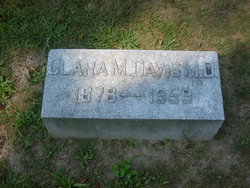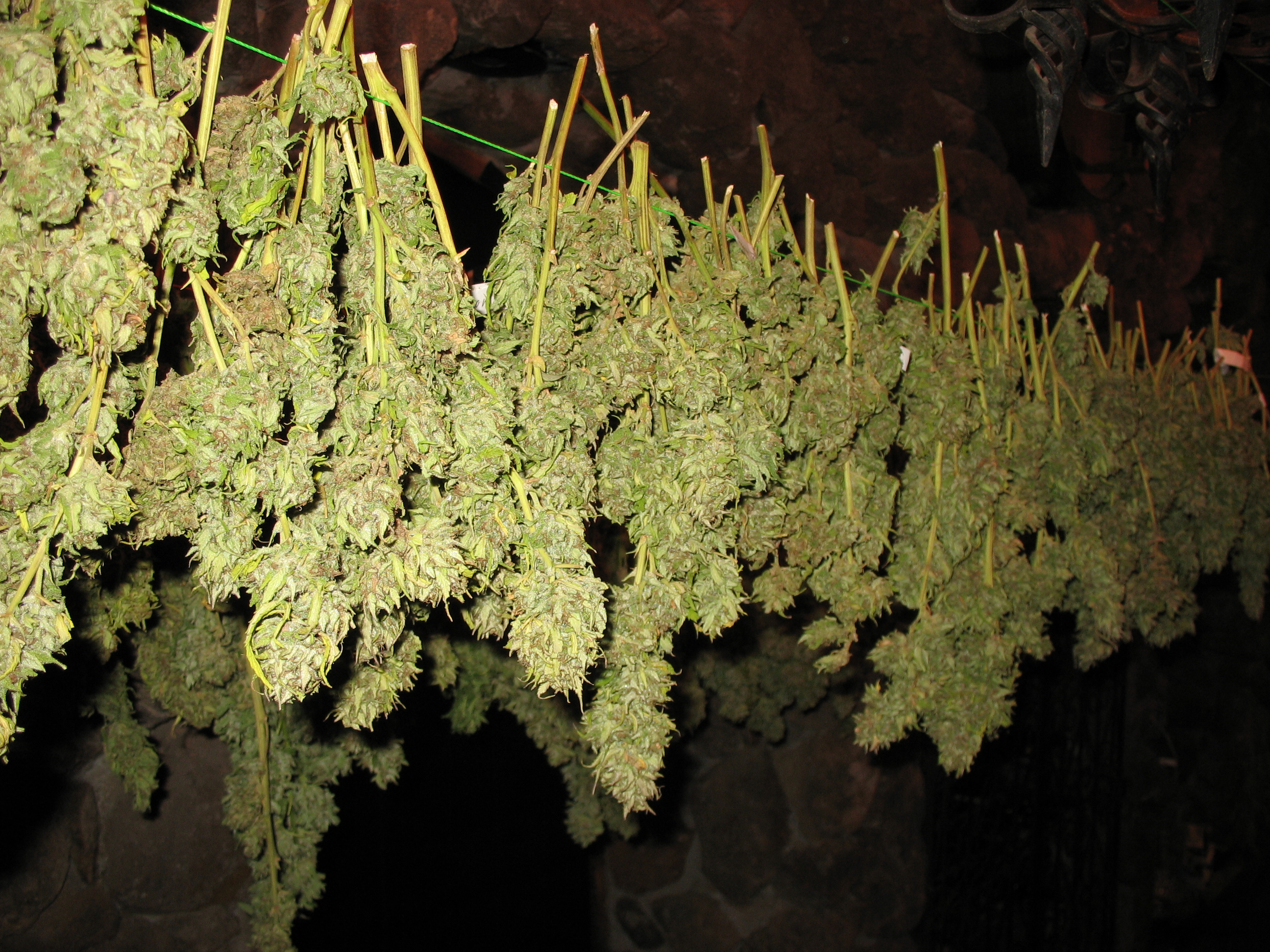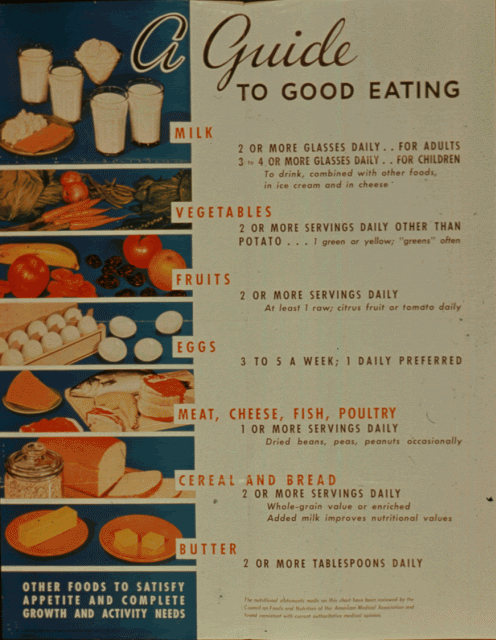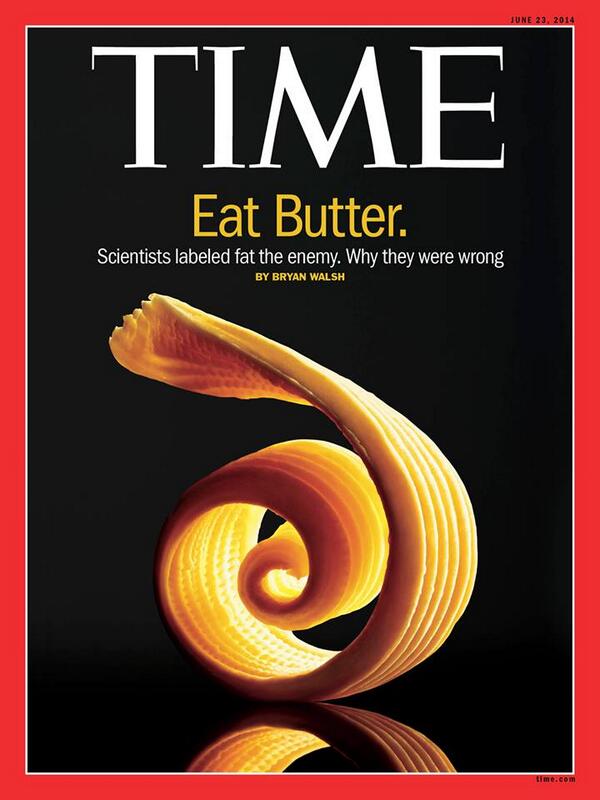Arguments for a Soda Tax are sometimes based on the specific metabolic effects of fructose, but for most people these effects are only slightly more stressful than the effects of glucose, and probably not worth worrying about too much. A more convincing argument to my mind is that sugar availability promotes overconsumption of energy, and carbohydrate energy in particular. Not to mention azo dyes and similar unappreciated toxins, which are mainly consumed associated with sugars. This allows the sugar industry to say "it's the calories" when analysing the data. But does restricting sugar make it easier for individuals to select a nutritious diet without overeating?
Dietary Instinct, by John Yudkin(from the Penguin Encyclopaedia of Nutrition, 1985)
It is sometimes asked "Why do we need nutritional advice?" Animals in their natural habitat, including our early ancestors, ate the foods that they instinctively chose, and those foods when available must be assumed to have supplied all their nutritional needs; natural selection would otherwise have insured the disappearance of the species. Why then does modern man need to be told how to obtain a balanced diet with fruit and vegetables for vitamin C, meat, fish, eggs, milk, and cheese for protein, and so on?
It has been proposed that this has arisen because man, with his scientific and technological skill, can make extracts from foods, mix them in varying proportions, add synthetic flavours and colours, and so produce new foods, more attractive and sometimes cheaper than many of the foods in their natural state. The qualities of attractiveness do not, however, ensure that the foods contain much, if any, of the necessary nutrients. As a result these new attractive foods may replace other and more nutritious foods in the diet and thus predispose to deficiency, or be eaten in addition to other foods and so predispose to the development of obesity. A further suggestion is that, because the most attractive new foods are those rich in sugar, they lead to an excessive consumption of this undesirable dietary item.
This approach to the question of what is a balanced diet lays stress more on what foods should be avoided than on what foods should be chosen. If the wrong foods are avoided, instinct will determine the amounts and selections from the correct foods. These are the foods than can be gathered, taken out of the soil, or slaughtered: the sorts of foods our ancestors hunted and gathered. They are meat, fish, eggs, fruits and vegetables; because of the constraints of pressure of population and of urbanization, it is usually necessary to add two of the foods introduced in the early days of the agricultural revolution, namely milk and cereal-based foods such as bread. Without these foods it would in many countries be difficult for the less wealthy to get enough to eat.
According to this argument, dietary instinct determines that we choose a food because we like it rather than because we need it. Dietary instinct cannot therefore be relied upon as an appropriate guide for a healthy diet when it is possible for the food manufacturer, and to some extent the skilled cook, to make foods that are increasingly attractive without regard to their wholesomeness or nutritional value.
~~~~~~~~~~~~~~~~~~~~~~~~~~~~~~~~~~~~~~~~~~~~~~~~~~~~~~~~~~
Does dietary instinct work in captivity, which may be a realistic model for civilization?
In this study, rats self-selecting diet, from weaning to maturity, ate more protein and fat and less carbohydrate than rats fed standard chow.
In self-selecting males, protein intake was maximal at Week 7 of age and then plateaued (Week 13), whereas in females, protein consumption peaked at Week 7 and then steadily decreased. Females showed a strong and early preference for fat, which increased continuously with age. Differences between dietary groups in body fat mass were not observed with the exception of higher subcutaneous fat found in self-selecting rats. Moreover, insulinemia was lower in both male and female self-selecting rats. The high-protein, high-fat diet chosen by the self-selecting rats could be linked to a prevention of the age-related insulin resistance.
Here, in the follow-up from the same group, protein intake was circadian and high intakes are mentioned:
Rats that are allowed to select their diets [dietary self- selection (DSS)2] are able to regulate their daily energy intake, body weight gain, and reproductive cycle (1–4). Broad variations in macronutrient selection nonetheless occur. In the case of protein, the intake required to maintain a stable nitrogen balance and protein turnover in human adults and rats has been established at 10–15% of total energy, and a high protein intake is often considered an unnecessary burden, particularly for the liver and kidneys (5–7) With DSS, rats spontaneously ingest up to 30% or even 50% of their total energy intake in the form of protein.
(I know you'll be wanting references 5-7 from that study, well two are just "WHO Guidelines" and "Dietary Recommendations" type committee-generated rubbish, the only scientific evidence is here, and the abstract doesn't include morbidity or mortality data. Human data is that restricting animal protein is unnecessary and perhaps ill-advised in diabetic kidney disease, and that some hunter-gatherer diets, such as that of the Australian Aborigine, can be very high in protein - 50% or more - see the Drs Eades' Protein Power, p. 46-48)
The problem with rat experiments is that rats are never offered much in the way of real foods. It's always a choice between one type of supplemented junk and another with them. If they're lucky they'll get a little bacon or butter, but humane experiments like that are very much the exception.
Are there experiments testing Dietary Instinct in humans? Luckily, a similar experiment was run in a Chicago orphanage during the 1920s by Dr Clara M. Davis.
It is discussed here by Canadian science journalist Stephen Strauss:
The PDF of Clara M. Davis's original report of her remarkable n=15 experiment can be seen here.
Average macronutrient disribution chosen was 17% protein, 35% fat, 48% carbohydrate (it would be hard to get a higher fat/protein ratio from the foods available, as there is no butter or oil).
The diet is both nutrient-dense and energy dense, in modern parlance. It is low in PUFA but fructose from fruit is readily available. We can only speculate on the reasons why pork was not included, whether this was a religious convenience or a health based decision.
There is an interesting reference in the paper to a form of dietary self-selection also being used in the Children's Memorial Hospital at that time. Children convalescing from the glandular fever epidemic consumed more carrots, beets, and raw beef. I'm guessing that raw beef and raw offal was not on the menu at the Children's Memorial Hospital, but who knows? In the context of Chicago and Prohibition, all bets are off.
The children were as healthy as 1920's children could be. I wonder if any have written memoirs, and I dearly hope Stephen Strauss completes his promised book on this affair. I know a lot of people who will be interested in that.
So there we have it - cut out sugar, stock the home with real foods only, and watch the appetite go feral.
Some Clara M. Davis from the interweb:
A letter to Clara M. Davis
A 1987 review (paywall)
A good blogger's take, from a baby-led weaning advocate.
![Dr Clara M. Davis]()
A contemporary pop song summed up the healthy 1920's diet:
Dietary Instinct, by John Yudkin(from the Penguin Encyclopaedia of Nutrition, 1985)
It is sometimes asked "Why do we need nutritional advice?" Animals in their natural habitat, including our early ancestors, ate the foods that they instinctively chose, and those foods when available must be assumed to have supplied all their nutritional needs; natural selection would otherwise have insured the disappearance of the species. Why then does modern man need to be told how to obtain a balanced diet with fruit and vegetables for vitamin C, meat, fish, eggs, milk, and cheese for protein, and so on?
It has been proposed that this has arisen because man, with his scientific and technological skill, can make extracts from foods, mix them in varying proportions, add synthetic flavours and colours, and so produce new foods, more attractive and sometimes cheaper than many of the foods in their natural state. The qualities of attractiveness do not, however, ensure that the foods contain much, if any, of the necessary nutrients. As a result these new attractive foods may replace other and more nutritious foods in the diet and thus predispose to deficiency, or be eaten in addition to other foods and so predispose to the development of obesity. A further suggestion is that, because the most attractive new foods are those rich in sugar, they lead to an excessive consumption of this undesirable dietary item.
This approach to the question of what is a balanced diet lays stress more on what foods should be avoided than on what foods should be chosen. If the wrong foods are avoided, instinct will determine the amounts and selections from the correct foods. These are the foods than can be gathered, taken out of the soil, or slaughtered: the sorts of foods our ancestors hunted and gathered. They are meat, fish, eggs, fruits and vegetables; because of the constraints of pressure of population and of urbanization, it is usually necessary to add two of the foods introduced in the early days of the agricultural revolution, namely milk and cereal-based foods such as bread. Without these foods it would in many countries be difficult for the less wealthy to get enough to eat.
According to this argument, dietary instinct determines that we choose a food because we like it rather than because we need it. Dietary instinct cannot therefore be relied upon as an appropriate guide for a healthy diet when it is possible for the food manufacturer, and to some extent the skilled cook, to make foods that are increasingly attractive without regard to their wholesomeness or nutritional value.
~~~~~~~~~~~~~~~~~~~~~~~~~~~~~~~~~~~~~~~~~~~~~~~~~~~~~~~~~~
Does dietary instinct work in captivity, which may be a realistic model for civilization?
In this study, rats self-selecting diet, from weaning to maturity, ate more protein and fat and less carbohydrate than rats fed standard chow.
In self-selecting males, protein intake was maximal at Week 7 of age and then plateaued (Week 13), whereas in females, protein consumption peaked at Week 7 and then steadily decreased. Females showed a strong and early preference for fat, which increased continuously with age. Differences between dietary groups in body fat mass were not observed with the exception of higher subcutaneous fat found in self-selecting rats. Moreover, insulinemia was lower in both male and female self-selecting rats. The high-protein, high-fat diet chosen by the self-selecting rats could be linked to a prevention of the age-related insulin resistance.
Here, in the follow-up from the same group, protein intake was circadian and high intakes are mentioned:
Rats that are allowed to select their diets [dietary self- selection (DSS)2] are able to regulate their daily energy intake, body weight gain, and reproductive cycle (1–4). Broad variations in macronutrient selection nonetheless occur. In the case of protein, the intake required to maintain a stable nitrogen balance and protein turnover in human adults and rats has been established at 10–15% of total energy, and a high protein intake is often considered an unnecessary burden, particularly for the liver and kidneys (5–7) With DSS, rats spontaneously ingest up to 30% or even 50% of their total energy intake in the form of protein.
(I know you'll be wanting references 5-7 from that study, well two are just "WHO Guidelines" and "Dietary Recommendations" type committee-generated rubbish, the only scientific evidence is here, and the abstract doesn't include morbidity or mortality data. Human data is that restricting animal protein is unnecessary and perhaps ill-advised in diabetic kidney disease, and that some hunter-gatherer diets, such as that of the Australian Aborigine, can be very high in protein - 50% or more - see the Drs Eades' Protein Power, p. 46-48)
The problem with rat experiments is that rats are never offered much in the way of real foods. It's always a choice between one type of supplemented junk and another with them. If they're lucky they'll get a little bacon or butter, but humane experiments like that are very much the exception.
Are there experiments testing Dietary Instinct in humans? Luckily, a similar experiment was run in a Chicago orphanage during the 1920s by Dr Clara M. Davis.
 |
| "Yes, Oliver, Dr Clara says you can have whatever you like!" |
' The foods she offered the children were varied, but all were generally thought to be healthy. Their intrinsic goodness meant that it would have been difficult for her small charges to veer too far from the nutritional straight-and-narrow.
[the list of foods:
1. Water
2. sweet milk (i.e. milk)
3. sour milk
4. sea salt
5. apples
6. bananas
7. orange juice
8. fresh pineapple
9. peaches
10. tomatoes
11. beets
12. carrots
13. peas
14. turnips
15. cauliflower
16. cabbage
17. spinach
18. potatoes
19. lettuce
20. oatmeal
21. wheat
22. cornmeal
23. barley
24. Ry-Krisp
25. beef
26. lamb
27. bone marrow
28. bone jelly
29. chicken
30. sweetbreads
31. brain
32. liver
33. kidneys
34. fish (haddock)
(some meat and offal was available both cooked and raw, where hygiene permitted, all cereals were boiled, no composite foods such as bread, soup or custard were offered. A wholefood is also a food by itself.)
[the list of foods:
1. Water
2. sweet milk (i.e. milk)
3. sour milk
4. sea salt
5. apples
6. bananas
7. orange juice
8. fresh pineapple
9. peaches
10. tomatoes
11. beets
12. carrots
13. peas
14. turnips
15. cauliflower
16. cabbage
17. spinach
18. potatoes
19. lettuce
20. oatmeal
21. wheat
22. cornmeal
23. barley
24. Ry-Krisp
25. beef
26. lamb
27. bone marrow
28. bone jelly
29. chicken
30. sweetbreads
31. brain
32. liver
33. kidneys
34. fish (haddock)
(some meat and offal was available both cooked and raw, where hygiene permitted, all cereals were boiled, no composite foods such as bread, soup or custard were offered. A wholefood is also a food by itself.)
“Errors the children's appetites must have made — they are inherent in any trial-and-error method — but the errors with such a food list were too trivial and too easily compensated for to be of importance or even to be detected.” The key thing was to provide healthy food and let children eat as much or as little of it as they wanted.
“The results of the experiment, then: Leave the selection of the foods to be made available to young children in the hands of their elders, where everyone has always known it belongs,” she told her peers in Montréal.
While an interesting double-hinged interpretation of her results, it was, Davis recognized, more a comforting argument than a true demonstration of the limitations of baby body wisdom. She did not present her little ones with a foolproof diet, just a not-intrinsically-foolish one.
It is actually beyond easy to imagine how Davis's orphans could have eaten themselves sick with healthy foods. Had one or more chosen only meat, fish and eggs, within short order they would likely have come down with scurvy. Had another been a fanatical vegan and eaten only fruits and vegetables, there is a good likelihood that he or she would have experienced a vitamin B12 deficiency and megaloblastic anemia.
Thus, the issue, really, was the extent to which an inner nutrition-seeking mechanism might lead children through the maze of choices they actually would face in the modern, eating world. What would happen, for example, if you offered the children not the Paleolithic diet of the Davis orphanage, but one where today's processed foodstuffs — think of a Big Mac mush, a slurry of Snickers and cola galore — were also on the menu?
Davis considered this and was not sure — particularly when confronted with the baroque ways her children constructed individual healthy diets out of a plethora of nutritious foods. To resolve the question, she told her Montréal audience she had decided to conduct just such a processed-food versus natural-food experiment. But alas, it was not to be: “The depression dashed this hope,” she laconically remarked, after a lack of funding forced the original experiment itself to end in 1931.
Average macronutrient disribution chosen was 17% protein, 35% fat, 48% carbohydrate (it would be hard to get a higher fat/protein ratio from the foods available, as there is no butter or oil).
The diet is both nutrient-dense and energy dense, in modern parlance. It is low in PUFA but fructose from fruit is readily available. We can only speculate on the reasons why pork was not included, whether this was a religious convenience or a health based decision.
There is an interesting reference in the paper to a form of dietary self-selection also being used in the Children's Memorial Hospital at that time. Children convalescing from the glandular fever epidemic consumed more carrots, beets, and raw beef. I'm guessing that raw beef and raw offal was not on the menu at the Children's Memorial Hospital, but who knows? In the context of Chicago and Prohibition, all bets are off.
The children were as healthy as 1920's children could be. I wonder if any have written memoirs, and I dearly hope Stephen Strauss completes his promised book on this affair. I know a lot of people who will be interested in that.
So there we have it - cut out sugar, stock the home with real foods only, and watch the appetite go feral.
Some Clara M. Davis from the interweb:
A letter to Clara M. Davis
A 1987 review (paywall)
A good blogger's take, from a baby-led weaning advocate.

A contemporary pop song summed up the healthy 1920's diet:























